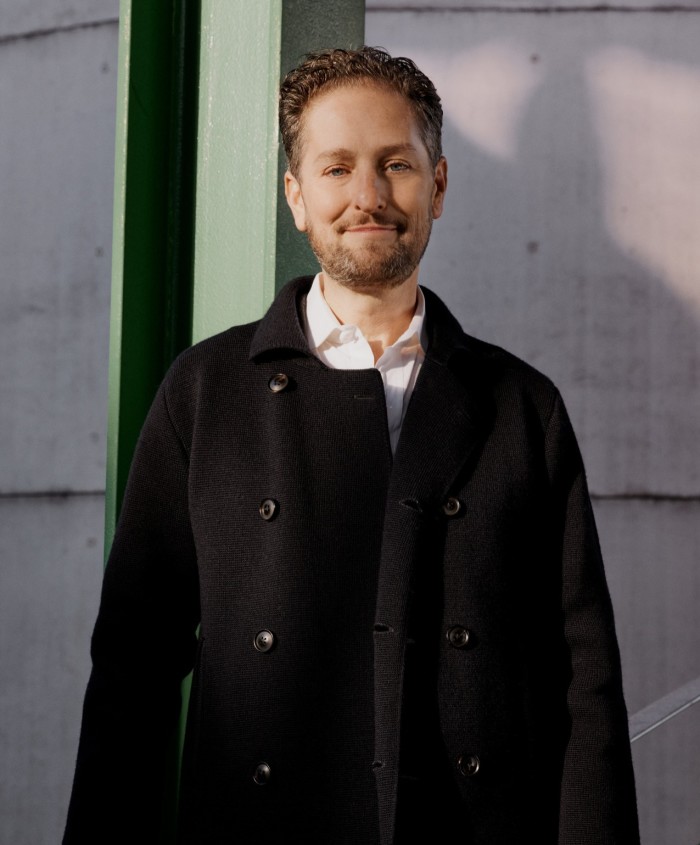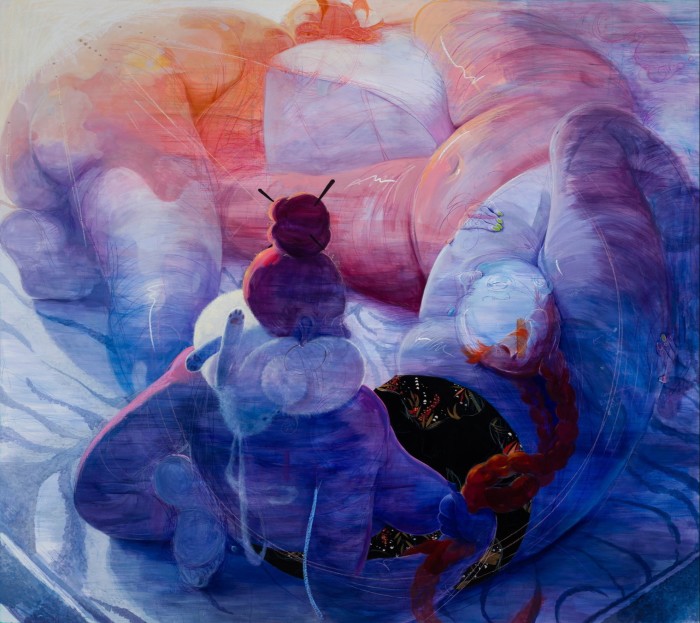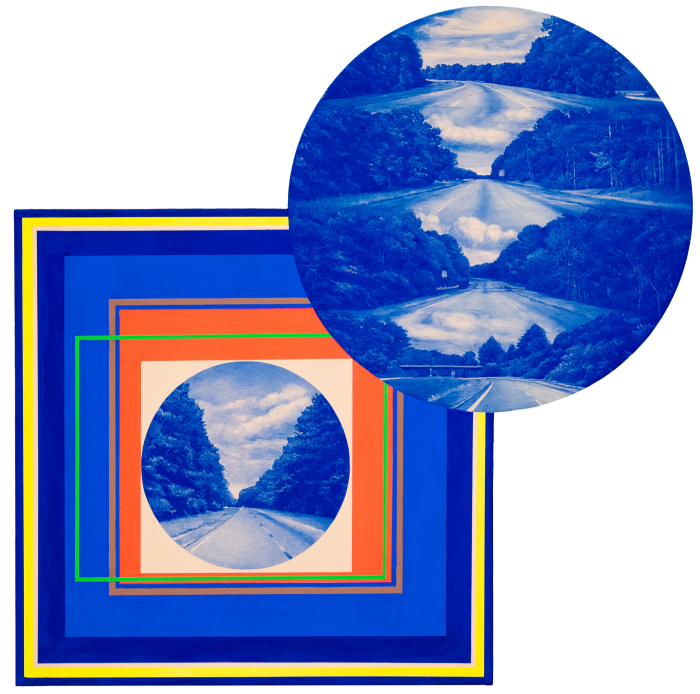Art Basel Miami Beach launches its 21st edition as US art-fair competition heats up

Roula Khalaf, Editor of the FT, selects her favourite stories in this weekly newsletter.
The recent shift in the US art fair landscape, with Frieze’s acquisitions of The Armory Show and Expo Chicago this year, has pitted the brands against rival conglomerate Art Basel and its Americas showpiece in Miami Beach. The fairs now compete in what looks like a shrinking field: art-fair sales fell from $16.5bn in 2018 to $13bn in 2022, according to Financial Times calculations based on figures in Art Basel reports, while collectors are going to four fairs this year, compared with five in 2019.
For Noah Horowitz, chief executive of Art Basel, which opens Miami Beach’s 21st edition on December 6, the backdrop of consolidation has been a spur to action. “We are doubling down and are really focused on making our shows much more unmissable and more distinctive,” he says.

In Miami, the fair’s unrivalled position as a gateway to Latin America gets greater emphasis this year. Newcomer galleries include Galatea from São Paulo and Llano, a project space in Mexico City. Art Basel has also finally filled the director of Americas role, left vacant by Horowitz in 2021, with former gallerist Bridget Finn, who starts in earnest for next year’s edition. “She is a much loved and respected person in the US art scene,” Horowitz says.
He concedes “given the scale of what we are delivering”, Art Basel risks “an inherent corporatisation or institutionalisation”. As well as running four fairs in three continents, the group also lends its expertise to city-based events such as Art Week Tokyo. But Horowitz, who had a brief spell at Sotheby’s in 2021-22, insists: “I came back to Art Basel because it is a very human, responsive business.”

Either way, exhibiting galleries find some comfort in the stability of the Art Basel brand in a jostling art fair landscape where there is arguably too much choice. “Miami is always a great way to end the year and is strong both for contemporary and historical art. It is very, very consistent,” says Nick Olney, president of New York’s Kasmin Gallery. Works that his gallery is bringing this year range from a new piece by Nengi Omuku ($70,000) to a 1950 oil by Lee Krasner ($1mn).
London gallerist Pilar Corrias finds that “the flavour of each of their fairs may be a bit different, but [Art] Basel is a staple. You know they will attract international collectors and institutions.” She also brings a mixed booth to this year’s fair, including new pieces by Tschabalala Self and the gallery’s recent signings, Lina Iris Viktor and Tomashi Jackson, whose work is included in the current Going Dark exhibition at New York’s Guggenheim Museum (booth price range $20,000-$250,000).


Corrias says that a key distinction of Art Basel is that its locations — particularly Miami, Hong Kong and Basel — “are places where the fair becomes the centre of what is going on in each city”. Such a luxury is not afforded in other cities, where fairs compete for attention with a thriving gallery scene and, often, coinciding auctions. London gallerist Josh Lilley also commends the art fair’s ability to produce a “single moment of energy”.
He has recommitted fully to Miami this year, showing again in the Meridians section for large-scale projects, with what he describes as “the most risky installation so far”, in terms of its commercial appeal — a 16-screen work by the LA-based video artist Brian Bress (“S’kill or be S’killed” (2023), $400,000). Lilley has also taken his “biggest booth ever” in the main fair, including work by Tom Anholt, a sculpture and painting by Autumn Wallace and a “next-level ceramic” butterfly wing by Rebecca Manson at the centre of the stand (booth prices up to $105,000).

Other fairs in the US still appeal to gallerists, who say they choose these based on their particular collecting communities — Lilley has made deep inroads through the Dallas Art Fair, for example — as well as their artists’ needs and the timing of events compared to other activities in a gallery’s programme.
This localisation of market interests was a factor in Frieze’s acquisitions, according to chief executive Simon Fox: “The addition of these two fairs expands our network of collectors across the US and enables us to build deeper relationships with institutions, curators and patron groups across the Midwest and in New York.”
“The main problem galleries have is having the right inventory at the right time,” Corrias says. “If you have a hot, in-demand artist, and are doing five, 12 or even 15 fairs a year, you can’t ask for a work for each fair, that’s essentially an entire show.” Outside of the “must-do” events, she therefore picks fairs where she can bring a solo booth relevant to the location — and for which an artist can produce the work. Kasmin’s Olney notes that for a New York gallery, the location of the Armory Show — in the Javits Center — is “a real advantage as it is so close”.

There is still plenty of room for independently owned art fairs in the competitive, consolidating landscape, says Jeff Lawson, founder of the Untitled art fair, which opens its 12th edition on Miami Beach this year (December 5-10). As the main satellite to the Art Basel fair, Untitled offers a different sort of gallery at its core — generally younger, less tested and more experimental — though it does sometimes lose its exhibitors to the bigger fair. Lawson says this dynamic works fine: “We are constantly shifting.”
While he admits that he wouldn’t say no if the right bidder came calling, Lawson says that running his own business aligns him better with his exhibitors, who number 163 this year, marking the fair’s largest and most international edition to date. “Our market is made up of small, usually undercapitalised, mom-and-pop shops, run by creative people. I know what it is like to struggle to make payroll so we can communicate effectively,” he says. This would extend, he says, to being flexible with payment deadlines, though adds, “I am still running a business with its own outlays.”


Art Basel’s Horowitz promises that the bigger brand still offers “an empathetic approach to doing business” — and is no stranger to experimentation. Among the new galleries coming into his fair this year, he highlights Mrs. from New York, which brings paper-pulp and cement sculptures in a solo booth of the Jamaica-born Nickola Pottinger, and The Ranch gallery, with towering sculptures made from salvaged materials by the Puerto Rican artist Daniel Lind-Ramos. “The one thing that gives me hope and reassurance is an impressively deep pipeline of galleries doing really interesting things,” he says.
Art Basel Miami Beach runs December 6-10, artbasel.com

Comments